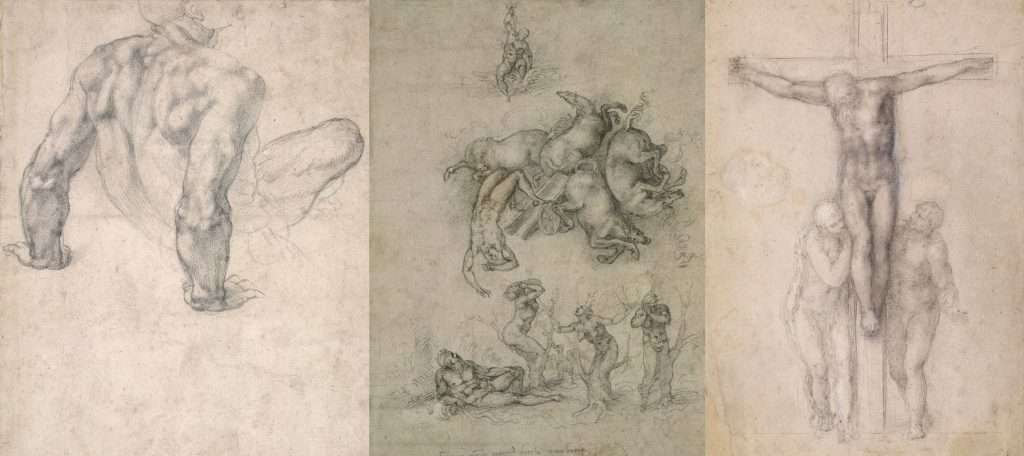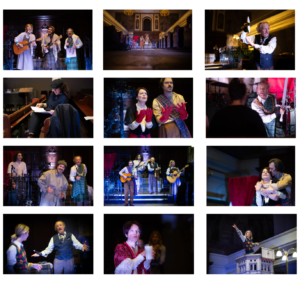Illuminating the humanity of the artist
You know you’ve made it when your grand deeds gain you entry to the mononym club. Well, maybe not so much in the case of reality star Rylan, perhaps, but certainly for the great 16th Florentine Renaissance sculptor, painter and architect Michelangelo whose late career is the subject of Michelangelo: The Last Decades at the British Museum, writes Gray.
Pope Julius II, not a pontiff to mince his words, described Michelangelo as a ‘terror-inducing man’, apparently describing his difficult character as much as his art. Best described by an adjective created especially for him, terribilità, or for the terror-inducing power of his work and the awe and the sense of the sublime it inspires in the viewer – Michelangelo was both jack and master of all trades, and let’s not forget he was also one of the most famous poets of the High Renaissance as well, as this exhibition brings into focus.
Young Michelangelo first chipped away with a chisel aged 13 and died, still drawing, just short of his 89th birthday. Best known for persuading Pope Julius to let him spend four years covering all 500 metres of the Sistine Chapel with a tableau of the Creation and the Fall of Man, and sculpting his much-copied iconic statue of David, Michelangelo quickly gained rockstar art status.
In The Last Decades, curator Sarah Vowles introduces us to the man behind the myth. Among the highlights of this new exhibition are letters, written in these last years in neat script detailing his fears, the ailments of old age – a troublesome kidney stone – deeply held religious convictions and ongoing search for salvation. We learn of his tender friendship with the spiritual poet Vittoria Colonna, revealed in a beautiful handwritten book of poems she gave him. His attempts at moral guidance are evident in a drawing of Titytus having his liver pecked out, a gift for nobleman Tomaso di Cavalieri, considered by an infatuated Michelangelo to be the ideal of masculine beauty. A letter containing stern advice for his nephew to secure the right kind of wife at all costs hints at irritability and control issues.

Inside the gallery, figures tumble and writhe in a jumble of tormented humanity, tiny sketches reveal the constant redrawing of compositions and reuse of imagery. Every figure in a composition is carefully drawn and studied by Michelangelo. A large projection of The Last Judgement, the masterpiece fresco completed when Michelangelo was 67 years old, is combined with some of the sketched drawings for this famous work. Look closely at St Bartholomew clutching his own flayed skin- the face on the skin is purported to be Michelangelo himself. Onto the plaster fresco skin the painter paints his own skin – powerful stuff indeed.
‘I am not an architect’, declared Michelangelo in 1546 despite successfully redesigning the Capitoline Hill and rebuilding St Peter’s Basilica. Architectural drawings are on display to highlight the projects he completed alongside his other commitments. Little wonder he gave away drawings to other artists to complete, evidenced here by painted collaborations with Venusti for The Annunciation paintings. This was also a canny move, giving him leverage, such as with the artist Ascanio Condivi, to whom he gave the preparatory sketch for Epifania so that Condivi could complete his own painted version. The condition was that in return Condivi would write a biography of Michelangelo that countered the version produced by the great chronicler Vasari. This exhibition reunites both versions. Condivi’s restored painting is beautiful but stolid when paired with Michelangelo’s graceful sketch, rich with subtle humanity.
The most moving space in the gallery is reserved for a small chapel-like gallery of Michelangelo’s crucifixion sketches. Over and over again he repeats the forms within – his chalk movements are a mantra, a prayer to the higher power he believed rendered all his earthly works as nothing compared to the grace of God. It’s a deeply moving space to contemplate the powerful art and long working life of a man considered to be more divine than human. Michelangelo: The Last Decades illuminates the humanity of an artist so immersed in the turbulence of the human condition that he became obscured by the legacy of his own genius.
The British Museum, Great Russell Street, London WC1B 3DG until 28th June. Joseph Hotung Great Court Gallery. Saturday to Thursday 10.00–17.00, Friday 10.00–20.30. Admission: £18. Booking: https://www.britishmuseum.org/






